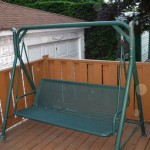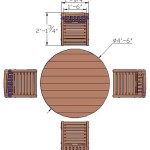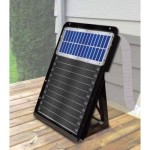Landscaping Ideas Around Paver Patio
A paver patio offers a durable and aesthetically pleasing outdoor living space, serving as a focal point for relaxation and entertainment. Integrating thoughtful landscaping around a paver patio enhances its visual appeal, seamlessly blending it with the surrounding environment. Effective landscaping design considers various factors, including plant selection, hardscape elements, and the overall style of the property. The following guide offers numerous landscaping ideas to complement a paver patio, ensuring a cohesive and inviting outdoor area.
Defining the Space with Planting Beds
Establishing defined planting beds around a paver patio is crucial for creating visual separation and adding depth to the landscape. These beds can be constructed using various materials such as natural stone, brick, or concrete edgers. The choice of edging material should complement the paver patio's design and the overall aesthetic of the property. Raised planting beds offer additional benefits, including improved drainage and easier accessibility for maintenance. They can also serve as informal seating areas.
When designing planting beds, consider the shape and size of the patio. For a rectangular patio, symmetrical planting beds on either side can create a balanced and formal look. For a more organic and informal design, asymmetrical beds with varying depths and heights can be employed. The width of the planting bed should be sufficient to accommodate the mature size of the chosen plants. A general guideline is to allow at least 2-3 feet of width for smaller plants and shrubs, and more for larger specimens.
Soil preparation within the planting beds is essential for healthy plant growth. Amend the soil with organic matter such as compost or well-rotted manure to improve drainage and nutrient content. Consider the specific soil preferences of the chosen plants. Some plants prefer acidic soil, while others thrive in alkaline conditions. A soil test can help determine the pH level and nutrient deficiencies in the soil, allowing for appropriate amendments to be added.
Plant selection for the planting beds should be based on several factors, including the amount of sunlight the area receives, the desired aesthetic, and the maintenance requirements. Plants with varying heights, textures, and colors can add visual interest and create a dynamic landscape. Consider incorporating a mix of evergreen and deciduous plants to provide year-round interest. Evergreen shrubs and trees provide a backdrop and add structure, while deciduous plants offer seasonal color and texture changes.
Plants that soften the edges of the paver patio are particularly effective. Low-growing groundcovers such as creeping thyme or sedum can spill over the edges, creating a natural and informal transition between the patio and the surrounding landscape. Ornamental grasses can add movement and texture, swaying gently in the breeze. Taller plants such as ornamental trees or flowering shrubs can provide shade and create a sense of privacy. Consider the mature size of the chosen plants to avoid overcrowding and ensure that they do not obstruct views or interfere with the patio's functionality.
Integrating Hardscape Elements
In addition to planting beds, incorporating other hardscape elements can enhance the visual appeal and functionality of the landscaping around a paver patio. Hardscape elements include features such as retaining walls, pathways, water features, and outdoor lighting. These elements can be used to define spaces, create focal points, and improve accessibility.
Retaining walls can be used to address grade changes and create terraced planting areas. They can be constructed from various materials such as natural stone, brick, or concrete blocks. The style and material of the retaining wall should complement the paver patio and the overall landscape design. Retaining walls can also serve as informal seating areas, providing additional space for guests to relax and enjoy the outdoor environment.
Pathways can be used to connect the paver patio to other areas of the landscape, such as gardens, lawns, or driveways. The pathway material should be durable and slip-resistant. Options include gravel, stepping stones, pavers, or concrete. The pathway should be wide enough to accommodate foot traffic and any equipment that may be used for maintenance, such as lawnmowers or wheelbarrows. Consider the overall style of the landscape when selecting the pathway material. A natural stone pathway can complement a rustic or informal design, while a concrete pathway can enhance a more contemporary or formal aesthetic.
Water features, such as fountains, ponds, or waterfalls, can add a sense of tranquility and visual interest to the landscape around a paver patio. The sound of running water can be soothing and can help to mask unwanted noise from traffic or neighbors. Water features can also attract birds and other wildlife, creating a more vibrant and dynamic outdoor environment. Consider the size and style of the patio when selecting a water feature. A small fountain may be appropriate for a small patio, while a larger pond or waterfall may be more suitable for a larger space. Ensure that the water feature is properly maintained to prevent algae growth and other issues.
Outdoor lighting is essential for creating a safe and inviting outdoor space after dark. Lighting can be used to highlight architectural features, illuminate pathways, and create a warm and welcoming ambiance. Consider using a combination of path lights, spotlights, and ambient lighting to achieve the desired effect. Path lights can illuminate pathways and steps, ensuring safe passage. Spotlights can highlight trees, shrubs, or architectural features. Ambient lighting can create a soft and even glow, enhancing the overall ambiance of the patio. Consider using energy-efficient LED lighting to reduce energy consumption and lower utility bills. Low-voltage lighting systems are also a safe and easy-to-install option.
Selecting Complementary Plants
The choice of plants surrounding a paver patio significantly impacts the overall aesthetic and functionality of the space. Selecting plants that complement the patio's style, the local climate, and the desired maintenance level is crucial. Consideration should be given to plant size, color, texture, and bloom time to create a visually appealing and sustainable landscape.
For a formal patio design, consider using symmetrical plantings and manicured shrubs such as boxwood or yew. These plants provide a structured and refined look, complementing the clean lines of a formal paver patio. Topiary plants can also add a touch of elegance and sophistication. Plantings can be arranged in geometric patterns to further enhance the formal aesthetic.
For an informal patio design, consider using a more naturalistic planting style with a mix of flowering perennials, ornamental grasses, and native plants. These plants create a relaxed and inviting atmosphere, blending seamlessly with the surrounding landscape. Allow plants to self-seed and spread to create a more natural and organic look. Ornamental grasses can add movement and texture, swaying gently in the breeze. Native plants are well-adapted to the local climate and require less maintenance than non-native species.
Plants with fragrant flowers can enhance the sensory experience of a paver patio. Consider incorporating plants such as lavender, roses, or jasmine to create a pleasant scent that fills the air. Plant these fragrant plants near seating areas or pathways to maximize their impact. Evening-blooming plants, such as moonflower or night-blooming jasmine, can provide a delightful fragrance after dark.
Plants that attract pollinators, such as bees, butterflies, and hummingbirds, can add life and vibrancy to the landscape around a paver patio. Consider incorporating plants such as butterfly bush, coneflowers, or salvia to attract these beneficial insects. These plants also provide a valuable food source for pollinators, helping to support local ecosystems. Avoid using pesticides or herbicides that can harm pollinators.
Plants that provide shade can make a paver patio more comfortable during hot summer months. Consider planting trees or large shrubs near the patio to provide shade. Deciduous trees are a good option as they provide shade in the summer and allow sunlight to penetrate in the winter. Consider the mature size of the tree when selecting a species to avoid overcrowding or interference with overhead power lines.
Ultimately, the landscaping surrounding a paver patio should reflect the homeowner's personal style and preferences. By carefully considering the factors outlined above, it is possible to create an outdoor space that is both beautiful and functional, enhancing the enjoyment of the patio and the overall value of the property.

Planning For A Paver Patio Ideas And Inspiration Town Country Living

Patio Paver Design Tips Ideas

5 Paver Patio Ideas To Add Your Outdoor Landscape Design In Bedford Nh Northern Lights

40 Patio Pavers Ideas Design For Paved Patios

Organizing A Landscape Design Around Central Paver Patio In Lewis Center Oh Arj

Beautiful Fire Pit Seating Areas Modern Backyard Ideas Landscaping Around Patio

Paver Patio Ideas Landscaping Network

Top 60 Best Paver Patio Ideas Backyard Dreamscape Designs Outdoor Pavers

7 Landscape Design Ideas For A Multi Level Paver Patio In Lewis Center And Dublin Oh Areas Arj

Top Patio Ideas With Pavers And Design For Sw Florida Epic Stoneworks
Related Posts








